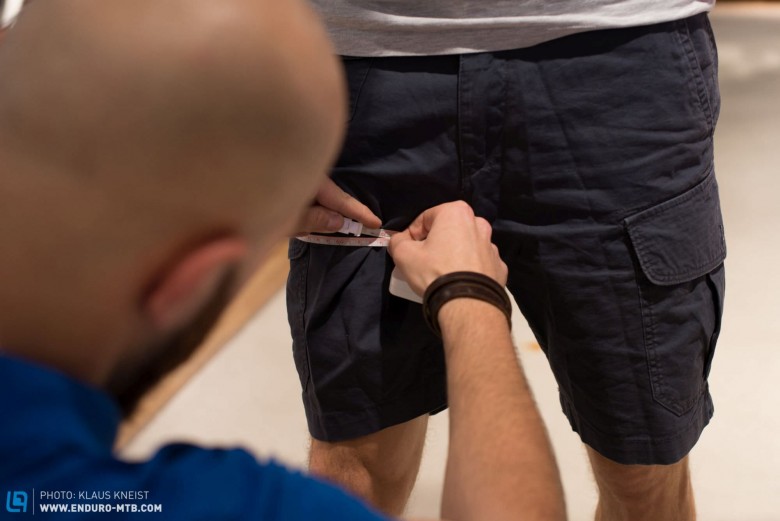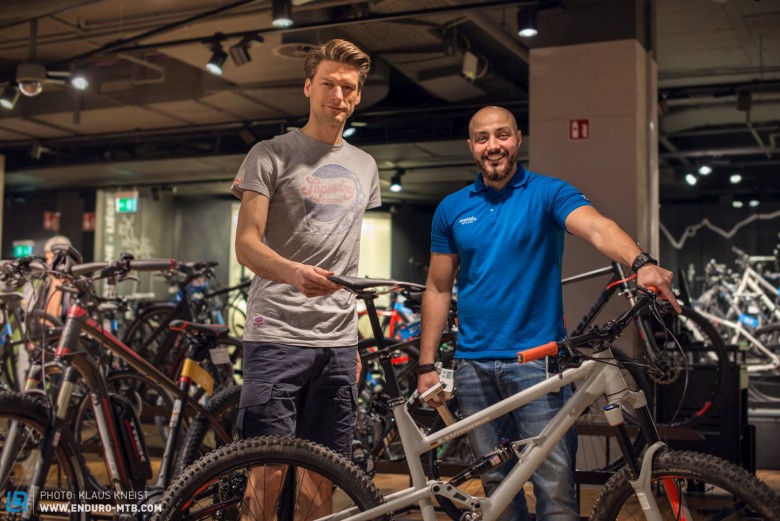Selle Italia idmatch: How do I find the perfect saddle?

Be honest, what criteria did you use for choosing saddles until now?
Looks, design, weight? The most important task of the saddle falls by the wayside: ergonomics and comfort. These jobs are delegated to the extra thick pad in your bib- shorts. Most riders just accept pain and seat problems as an unavoidable evil.
For runners it’s completely normal to measure and analyse your feet using modern technology. With bike saddles unfortunately not so. Yet this is an essential factor for decreasing pain and problems on long rides. But how do I find the right saddle?

In order to find out I drive to Mannheim with my bike in the car in order to test the idmatch-saddle fitting service at engelhorn sports, hoping that I can banish seat and back problems afterwards. I was expecting long winded tests and was curious about the results. One thing was sure though: the extra wide gel model my granny uses wouldn’t be coming home with me! Everything was different to my expectations.
First of all my personal data such as weight, age, sex and height were entered into the
idmatch evaluation terminal. Then questions about my annual mileage, how long I have been riding, which saddles I’ve used before and how satisfied I was with them. In my case it was a slim model which gave me maximum room to move on the trails but also caused the problems already described.


The next steps were measuring. First of all the distance between the head of each femur, then the circumference of each thigh. The third measurement was calculating the angle at which the spine bends from the hips. Then I was told why these measurements form the basis of choosing a saddle. The correct width of the seat area is determined by the width of the pelvis or the distance between the seat bones whilst the width of the saddle nose is restricted by the circumference of your thighs.



Whether the saddle should have a recess in the perineal area depends on how much the pelvis rotates forwards. An algorithm calculates the right saddle for body shape.
In this way my specific data were evaluated in about quarter of an hour. The whole thing was quicker and less complicated than I was expecting. The results were three different recommended saddles which shared the same overall dimensions but were optimised for different types of riding.


In my case this means the Selle Italia Flite L2 idmatch, which is chosen from 130 possible Selle Italia models. The back of the saddle is wider and flatter than my previous model. In this way the pelvis is better stabilised so that it no longer rotates. Even though I didn’t have any problems in the perineal area until now a model with a recess and an especially flexible mid- section is recommended based on my pelvis/spine angle. Otherwise the Flite is a saddle with firm padding and plenty of room to move about on which should make it the perfect companion for long trail tours and endurance races.



Before fitting the Flite, my existing seating position is measured and the saddle angle calculated. As I was happy with my existing position the Flite is fitted to match the old saddle position with a slight angling of the nose the only fine-tuning. Even in the first lap in the shop I can already feel that the seating pressure is now directly on the seat bones and not spread out everywhere. Now I can’t wait to see how the new saddle feels on the trail!

The competent advice was really impressive, I learnt a lot and return home hopeful that one of the biking fun-killers is now a thing of the past. I’ll keep you updated during the season whether the saddle lives up to its promises.
Words: Karl Kaffenberger | Pictures: Klaus Kneist
Did you enjoy this article? If so, we would be stoked if you decide to support us with a monthly contribution. By becoming a supporter of ENDURO, you will help secure a sustainable future for high-quality mountain bike journalism. Click here to learn more.








